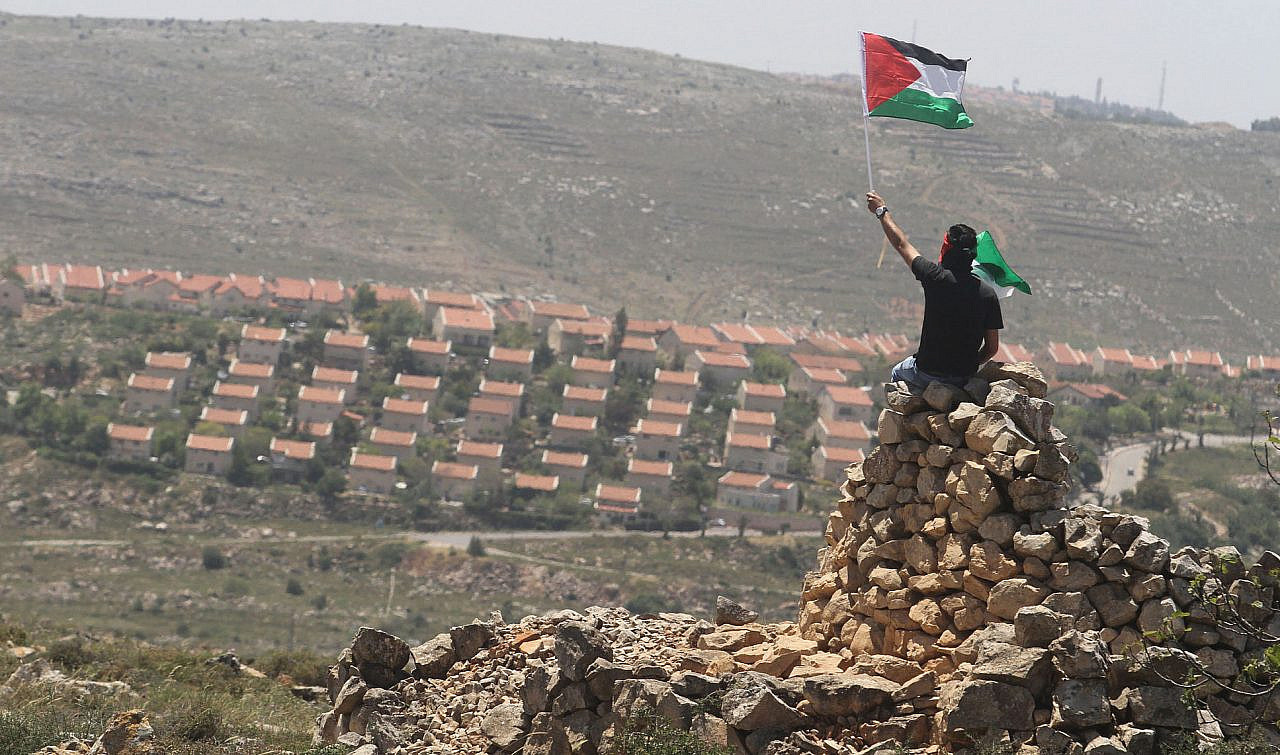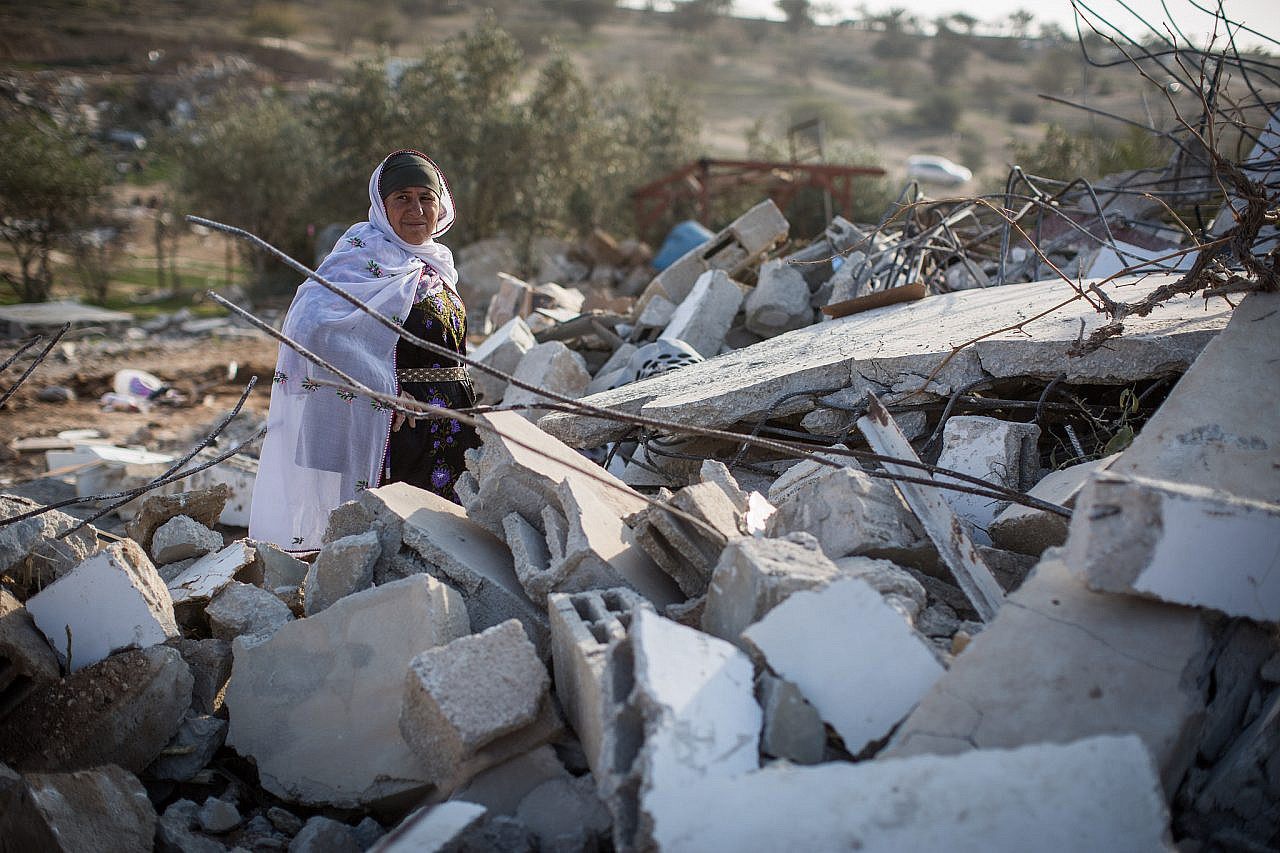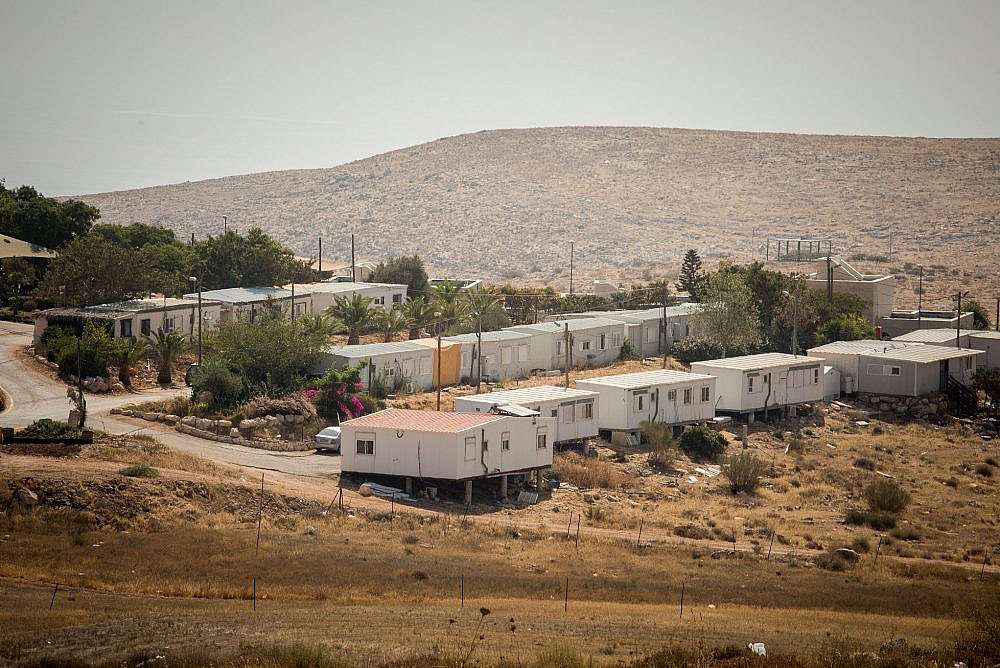This article was published in partnership with Local Call.
Israel’s High Court has been facing torrents of criticism from much of the left and center of the Israeli political spectrum following its decision last week not to dismantle Mitzpe Kramim, a settler outpost in the occupied West Bank, claiming it was built “in good faith” on private Palestinian land.
Mitzpe Kramim’s storied history begins in 1999, after a deal was struck between then-Prime Minister Ehud Barak and the Yesha Council — the umbrella organization of the West Bank settlement movement — to move the outpost to its current location, adjacent to the settlement of Kochav HaShahar, northeast of Ramallah. According to the deal, Mitzpe Kramim would be integrated into Kochav HaShahar’s master plan.
Palestinians from the nearby village of Deir Jarir who owned the land on which the new outpost sits filed a petition to the High Court to have the 40 families removed. Last Wednesday, the High Court ruled that the settlers would be able to remain, and that the Palestinians dispossessed of their land would be compensated for their losses.
The court’s ruling could potentially pave the way for the retroactive legalization of thousands more homes in outposts built on privately-owned Palestinian land. In 1999, on the eve of Barak’s deal with the settlers, there were only 42 settlement outposts — deemed illegal according to both Israeli and international law — in the West Bank. Today, that number has mushroomed to 147.
The legalization of Mitzpe Kramim is only a footnote in Israel’s policies of dispossession and land theft on both sides of the Green Line, carried out through what the Israeli regime deems completely “legal” expropriations. Moreover, the real story here is not Mitzpe Kramim, but rather its adoptive mother settlement, Kochav HaShahar.

‘Good faith’ for Jews only
Kochav HaShahar was established in 1979, but plans to build the settlement began in 1973 following a tour of the area by the Defense Ministry’s Commissioner of Government Property and Abandoned Lands in Judea and Samaria. This official is expected to administer “absentee” Palestinian property in the West Bank — i.e. the homes and lands of Palestinian who fled or were expelled in 1967 — in order to hold it in trust for its legal owners, while guaranteeing their financial interests (the custodian is not allowed to lease absentees’ land or rent it to Israeli settlers).
Following the tour, which included military personnel and members of the World Zionist Organization’s Settlement Division (founded in 1971 to help the Israeli government to establish settlements in the occupied territories), the army issued a “closure order” of the area, supposedly for military training purposes. Later, it changed the order into a “seizure order,” which allowed the WZO to construct buildings on the land and send settlers to live in them in clear contravention of international law.
The WZO includes representatives from all Zionist currents — from the “left” to the right. Dror Morag, for example, the current head of the Zionist Enterprises Department, served as the liberal Meretz party’s secretary general from 2011 to 2015.
With this in mind, we must not forget that the most institutionalized version of Israel’s plunder is carried out by the entire Zionist spectrum. Whether it is the WZO, the establishment of settlements such as Kochav HaShahar, the expulsion of the Sumarin family from their home in Silwan by the Jewish National Fund, or home demolitions and land grabs inside the Green Line, every single Zionist party has taken an active role in the violence intrinsic to the Zionist project.

For anyone who believes in equality, justice, and liberation for all between the river and the sea, it is particularly pertinent to understand the full scope of the Zionist left’s involvement in the ongoing plunder. This is not in order to brag about our own political purity or prove our credentials; we must expose the plunderous sides of the Zionist left so as to understand that parties such as Meretz and Labor are not actually making any “compromises” when they partner with an extreme and violent right-wing government, such as the outgoing “government of change,” but rather serve as an integral mechanism of oppression themselves.
And one more word regarding the concept of “good faith,” which was sufficient reasoning for the High Court to retroactively legalize the theft of private Palestinian land. This same line of argumentation did not protect the residents of Umm al-Hiran, a Bedouin village in the Negev/Naqab, from being threatened with destruction and expulsion, even though they were physically placed where the village exists today in the 1950s by the military government after it expelled them from their original land, on which Kibbutz Shoval now sits. Although the state itself was the one to move them to their new location, the residents of Umm al-Hiran have lived for decades without basic infrastructure such as water and electricity — that is, until the state decided to destroy the village in order to build Hiran, a town for Jews alone, on its ruins.
Unlike the settlers of Mitzpe Kramim, the residents of Umm al-Hiran did not take over land that did not belong to them, nor did they settle on private land that belonged to others. And yet, the state did not hesitate to brutally deport them — even killing a local resident, Yacoub Abu al-Qi’an, in the process. The same court that will allow the residents of Mitzpe Kramim to remain on land it itself admits does not belong to them did not hesitate to legalize the cleansing of Umm al-Hiran.
Because, after all, in the apartheid regime, even the concept of “good faith” applies solely to Jewish citizens.
This article was first published in Hebrew on Local Call. Read it here.


